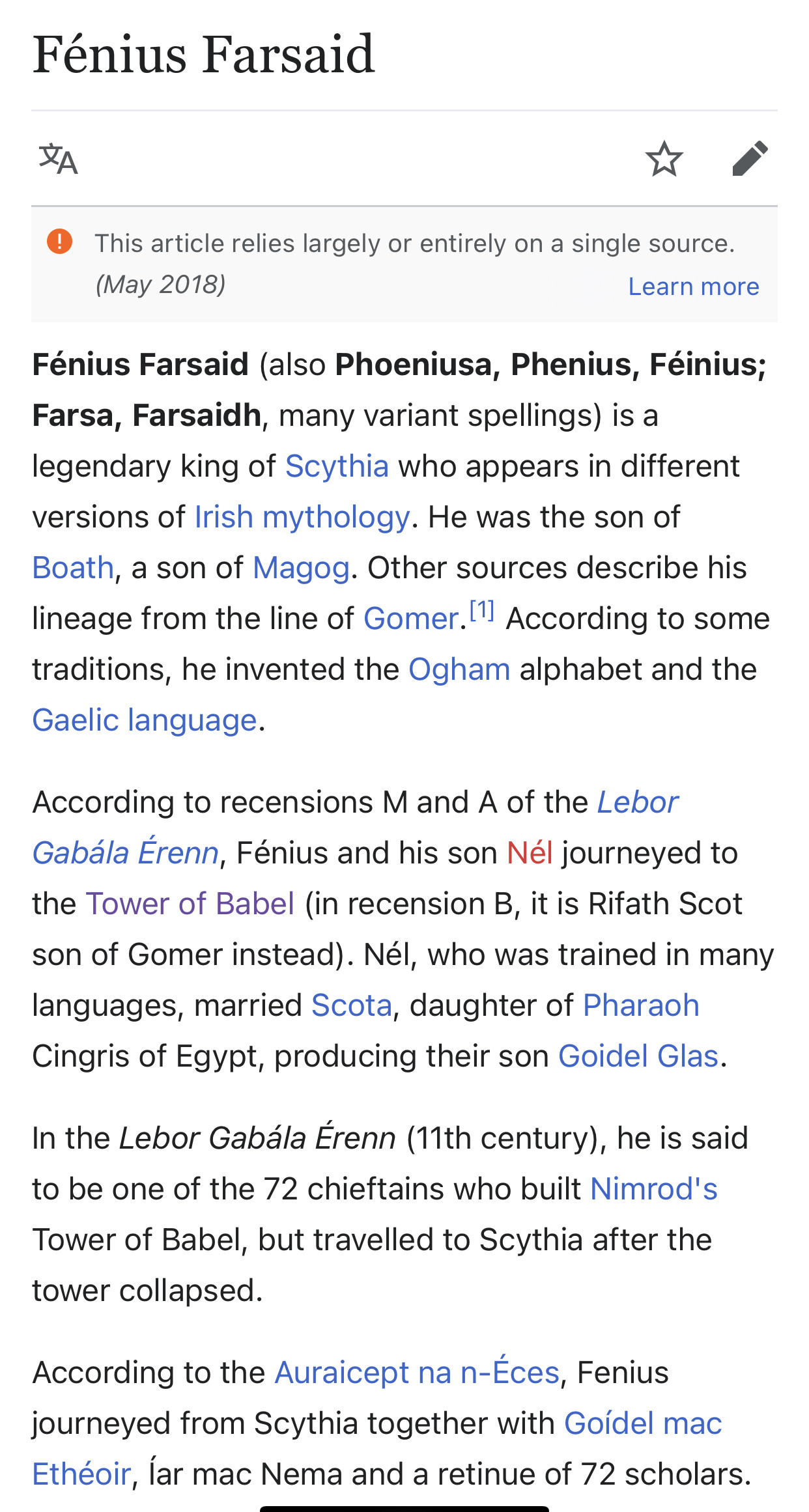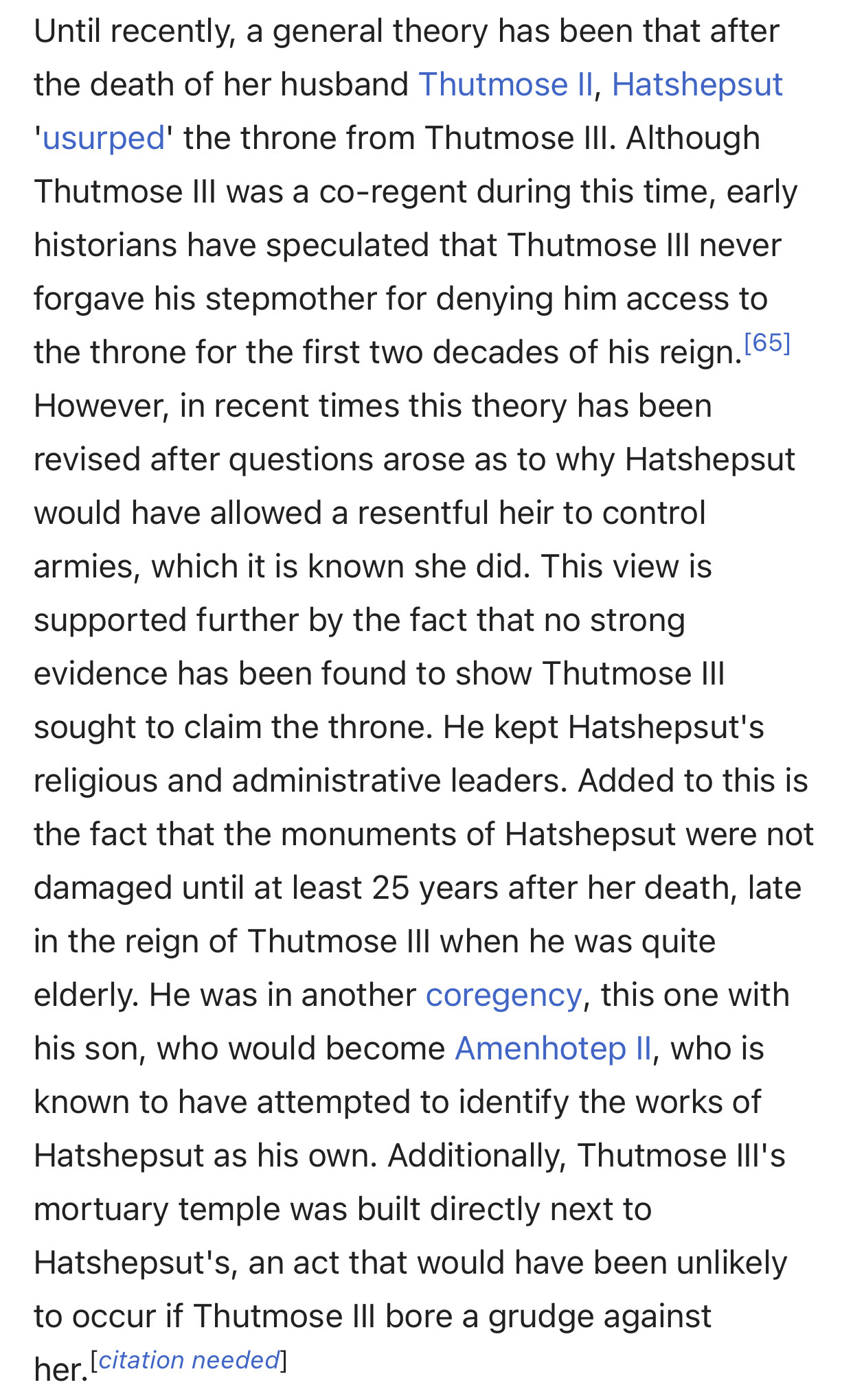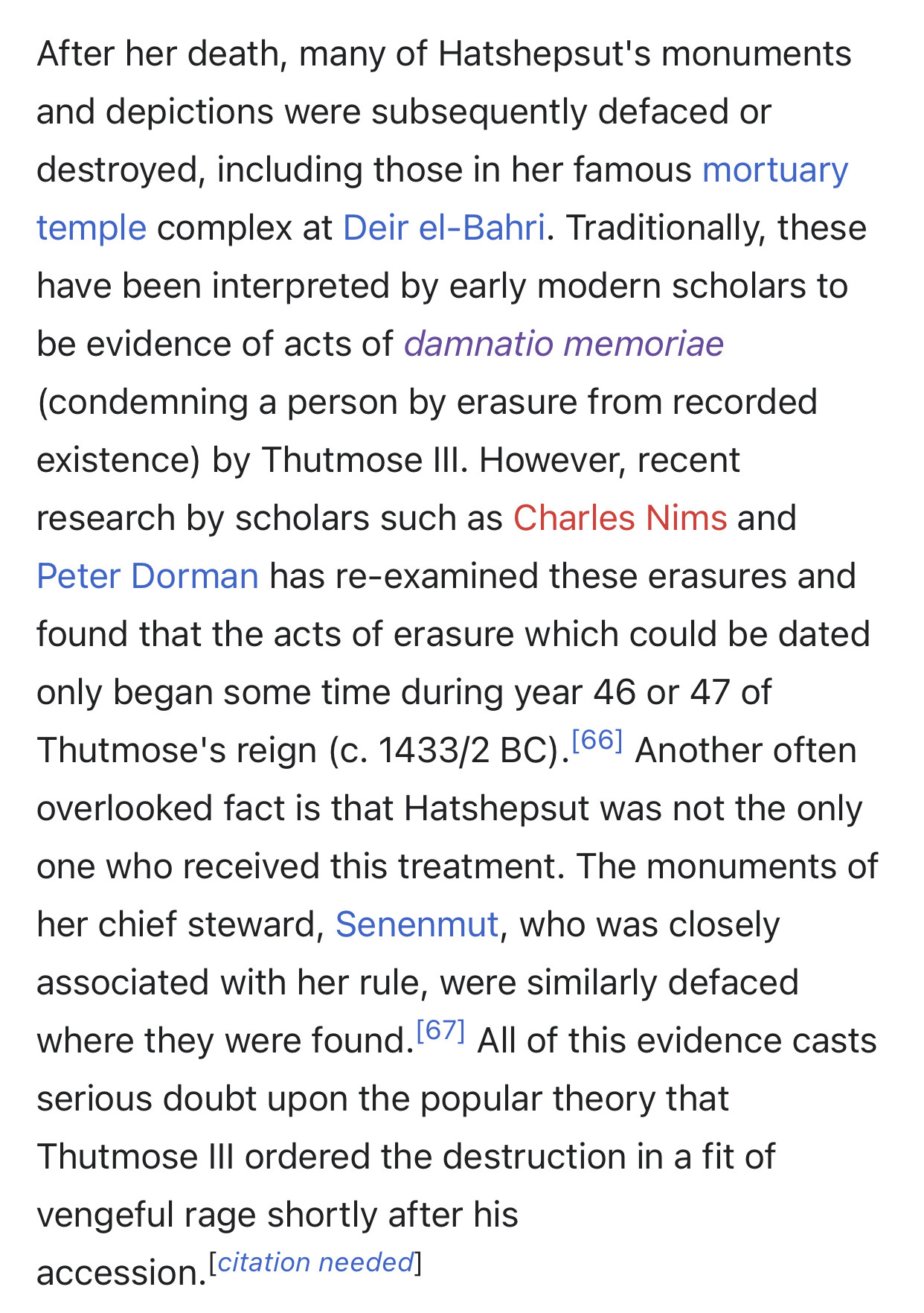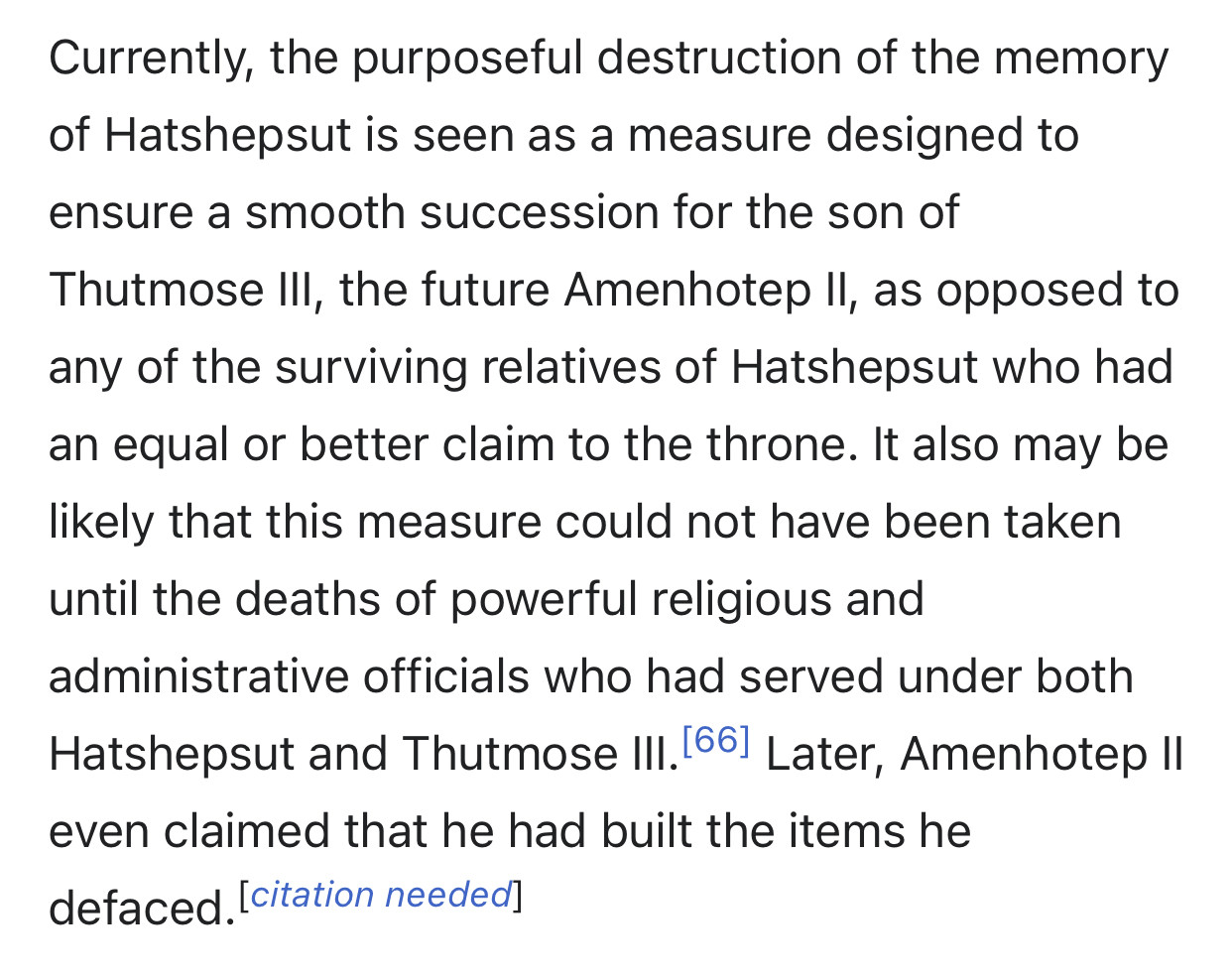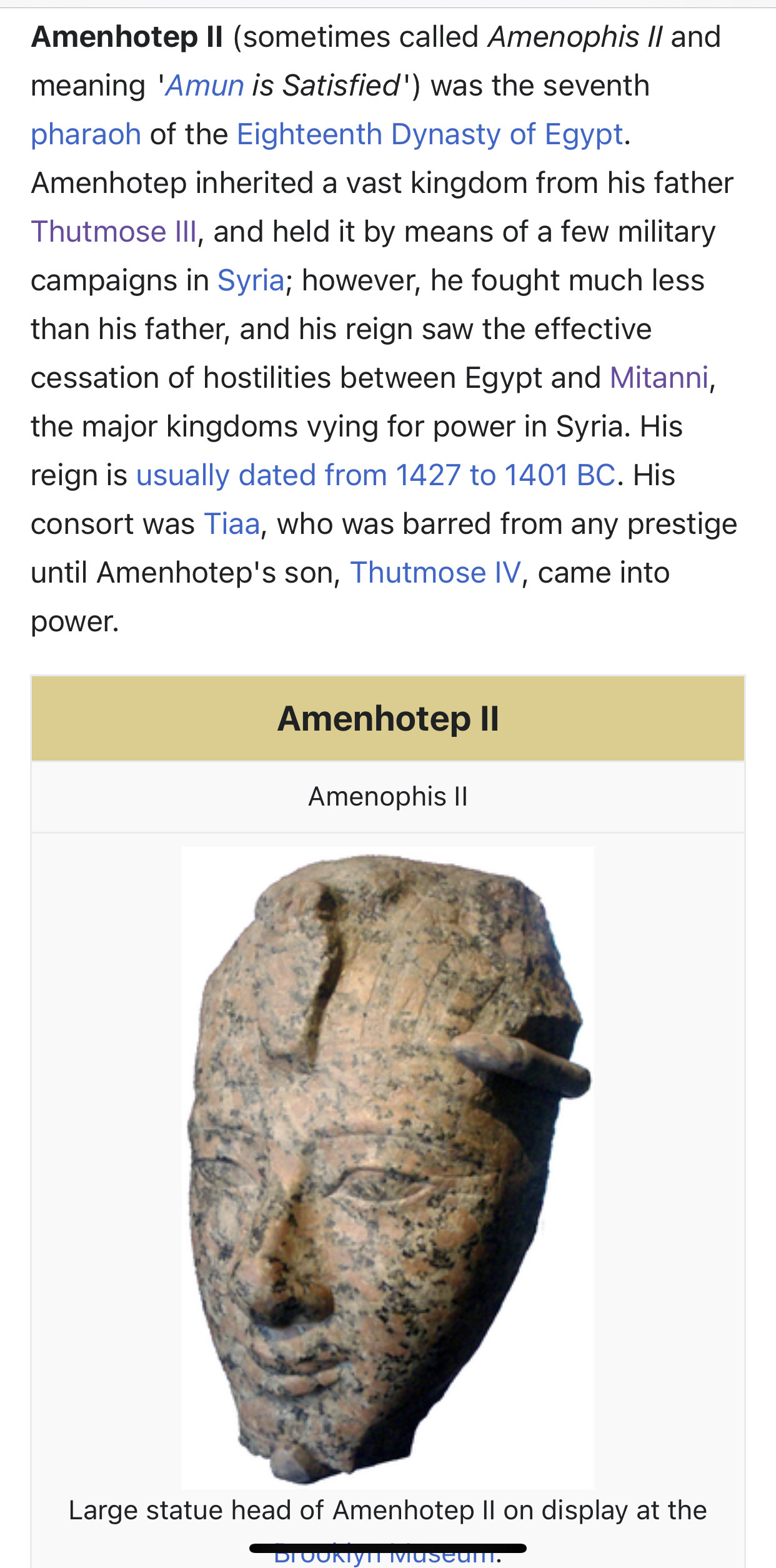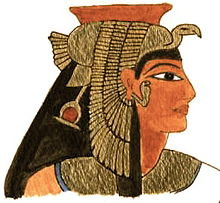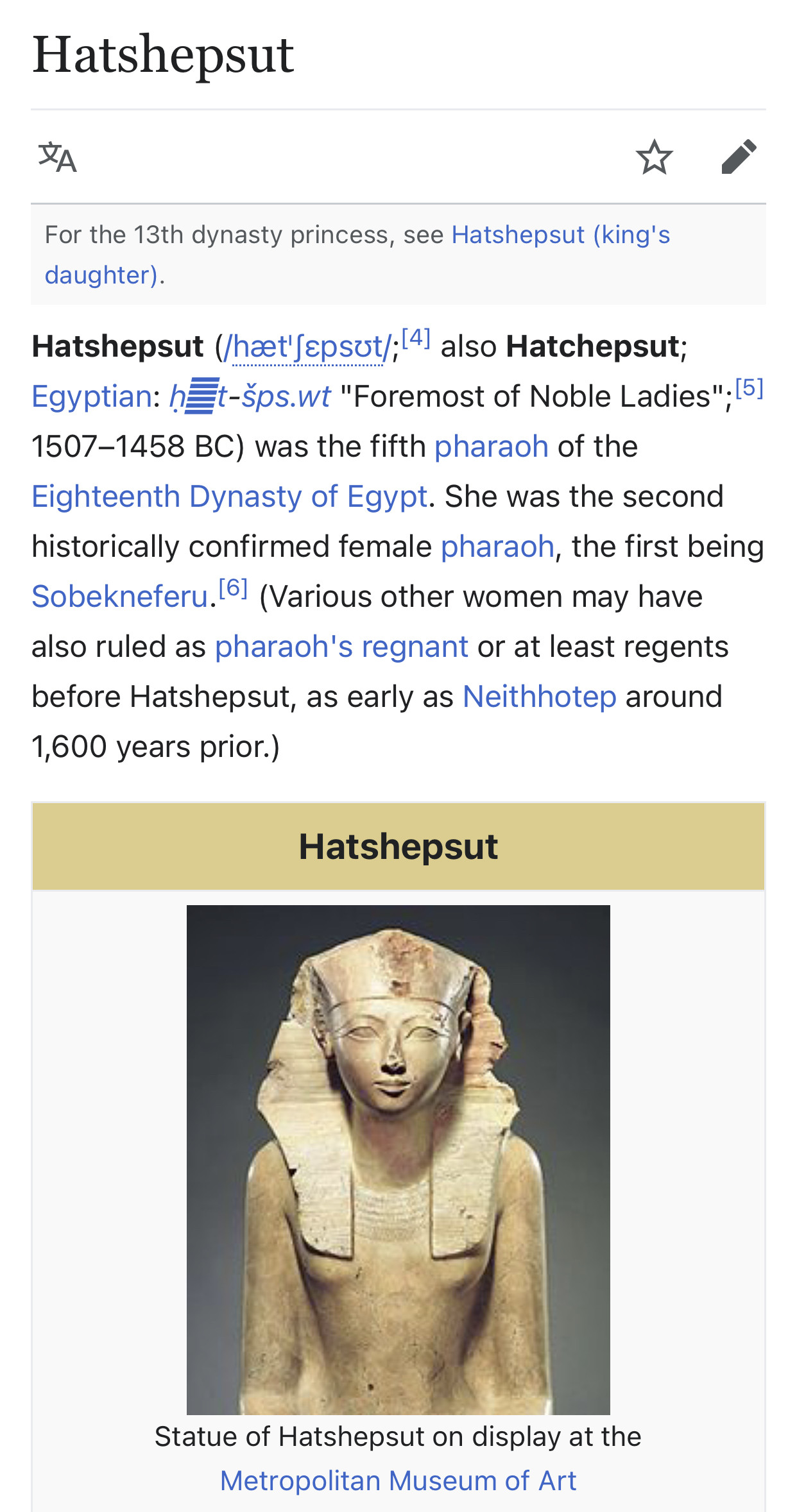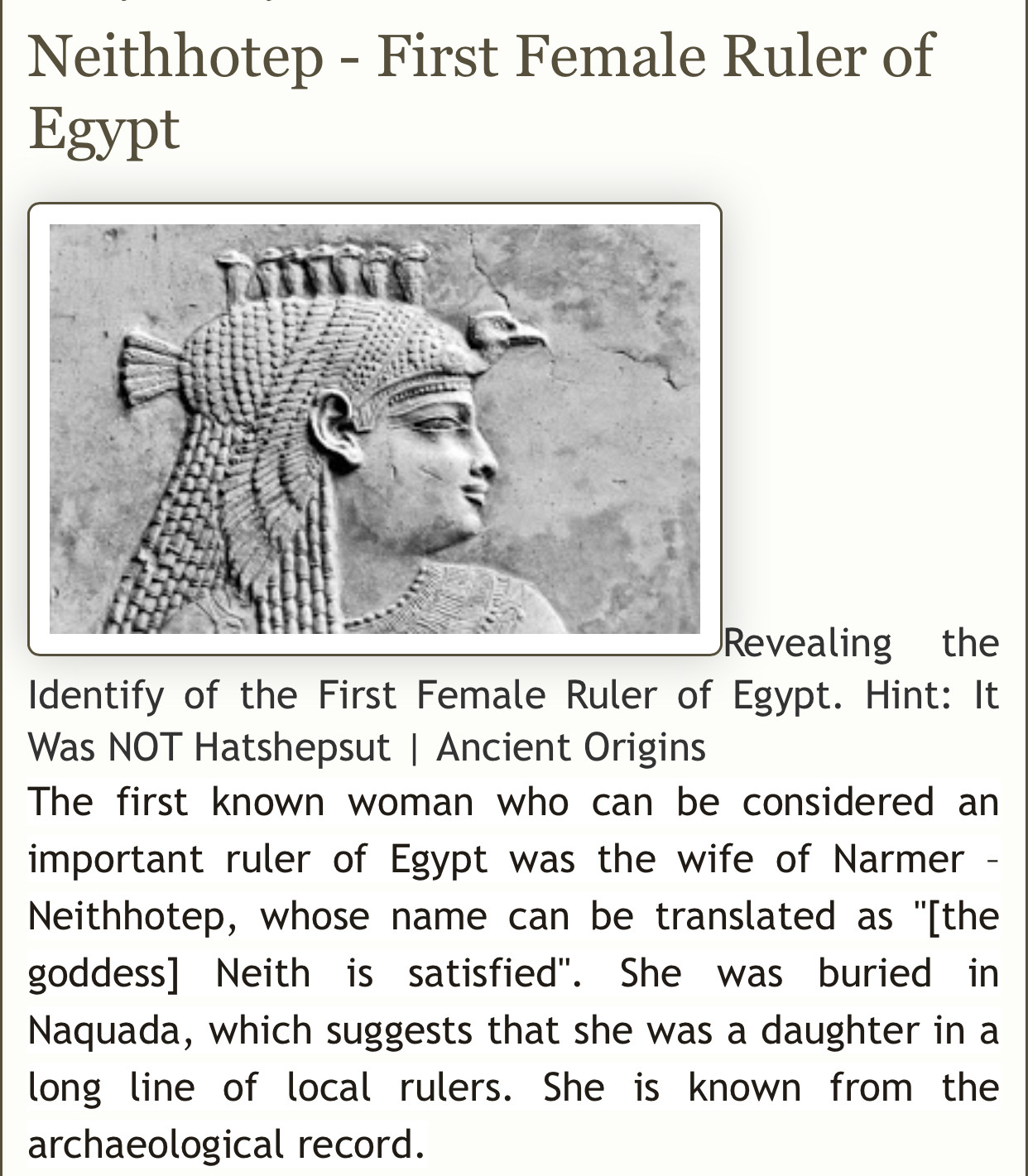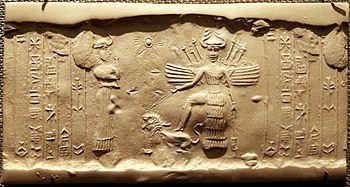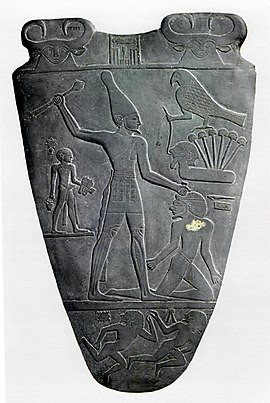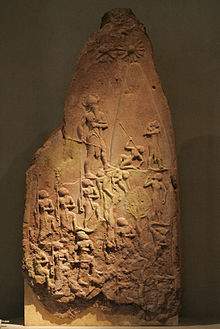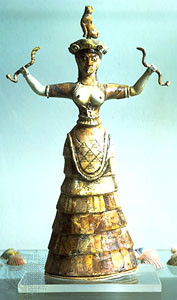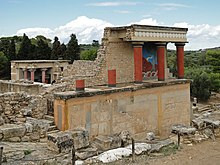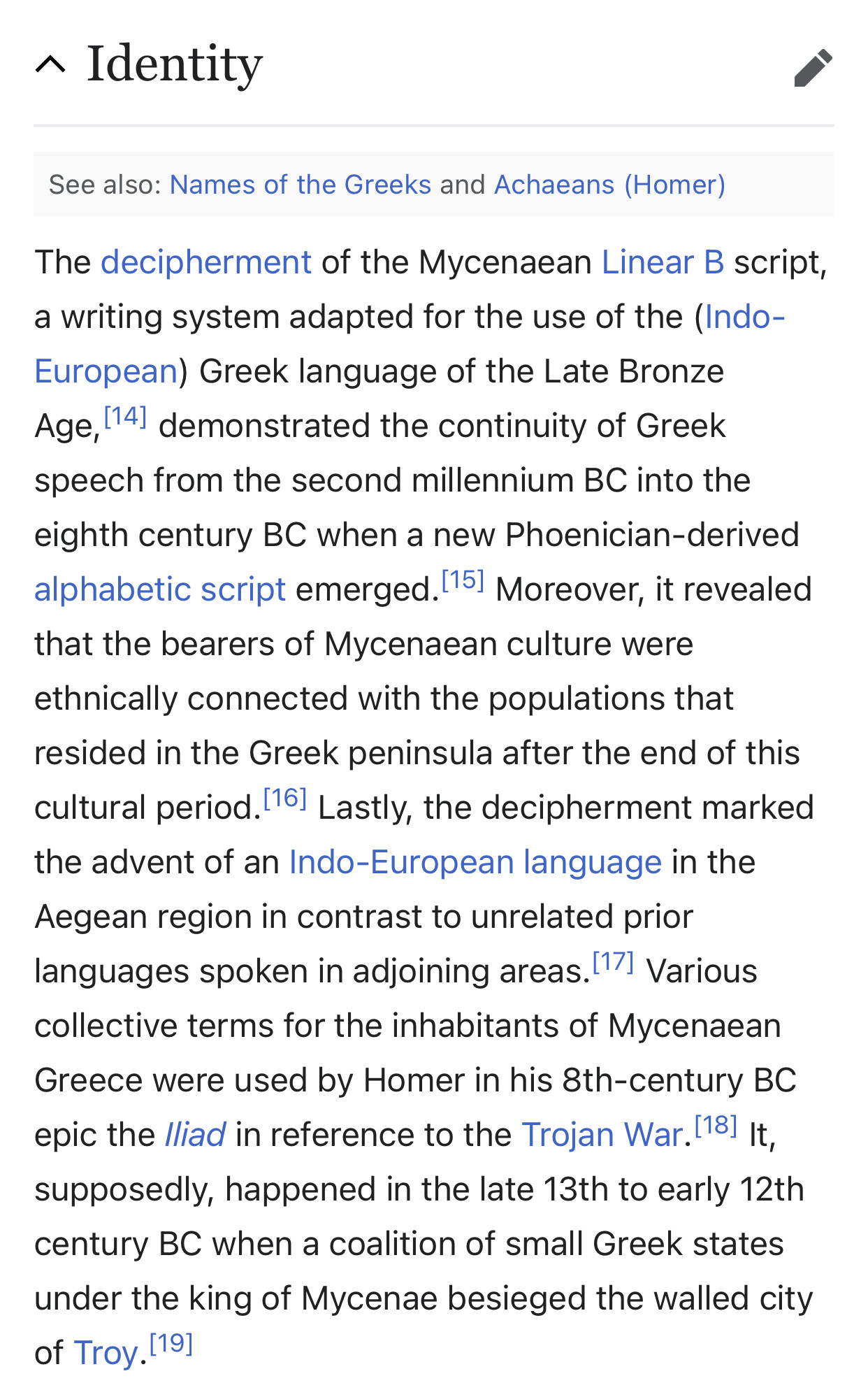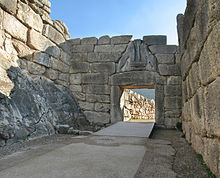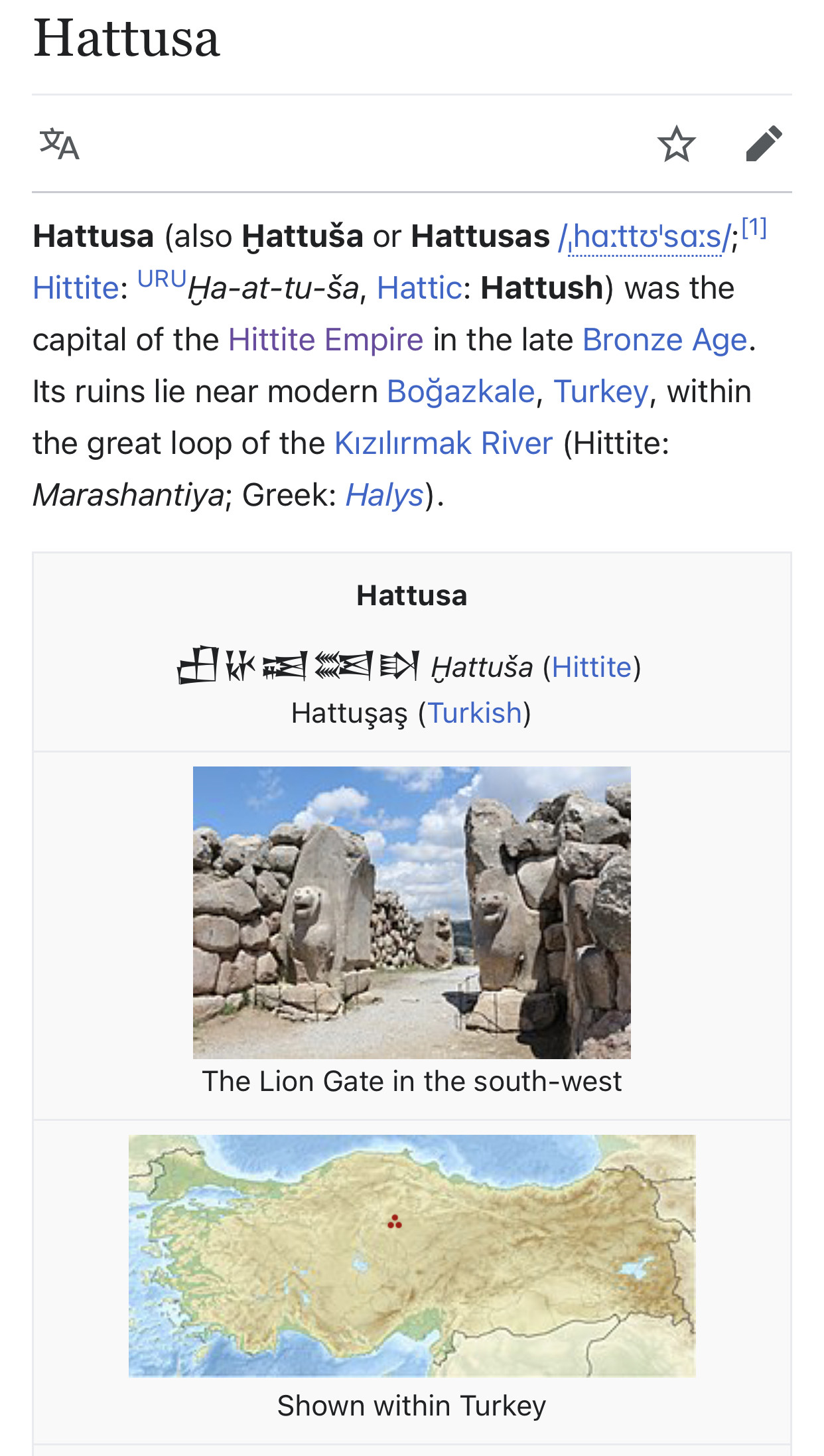Sargon of Akkad (/ˈsɑːrɡɒn/; Akkadian: 𒊬𒊒𒄀 Šar-ru-gi),[3] also known as Sargon the Great,[4] was the first ruler of the Akkadian Empire, known for his conquests of the Sumerian city-states in the 24th to 23rd centuries BC.[2] He is sometimes identified as the first person in recorded history to rule over an empire.
Understanding of the Akkadian Empire continues to be hampered by the fact that its capital Akkad has not yet been located, despite numerous attempts.[17][18] Precise dating of archaeological sites is hindered by the fact that there are no clear distinctions between artifact assemblages thought to stem from the preceding Early Dynastic period, and those thought to be Akkadian. Likewise, material that is thought to be Akkadian continues to be in use into the Ur III period.
The Bible refers to Akkad in Genesis 10:10–12, which states:
"The beginning of his [Nimrod's] kingdom was Babel, and Erech, and Accad, and Calneh, in the land of Shinar. Out of that land he went forth into Assyria, and builded Nineveh, and Rehoboth-Ir, and Calah, and Resen between Nineveh and Calah (the same is the great city)."
The Tower of Babel (Hebrew: מִגְדַּל בָּבֶל, Migdal Bavel) narrative in Genesis 11:1–9 is an origin myth meant to explain why the world's peoples speak different languages.
Damnatio memoriae is a modern Latin phrase meaning "condemnation of memory", indicating that a person is to be excluded from official accounts. There are and have been many routes to damnatio memoriae, including the destruction of depictions, the removal of names from inscriptions and documents, and even large-scale rewritings of history. The term can be applied to other instances of official scrubbing; the practice is seen as long ago as the aftermath of the reign of the Egyptian Pharaohs Akhenaten in the 13th century BC, and Hatshepsut in the 14th century BC.
Tiaa or Tia'a (Ancient Egyptian: 𓍘𓉼𓁗 tjꜥꜣ) was an ancient Egyptian queen consort during the Eighteenth Dynasty of Egypt. She was the a "faceless concubine" during the time of Amenhotep II who withheld from her the title Great Royal Wife, but when her son Thutmose IV became pharaoh, he performed a revision of her status and gave her that title.[1][2]
Neithhotep's name is connected to Neith, the goddess of war and hunting. This followed a tradition notably practiced during the first dynasty: many queens (such as Merneith/Meritneith, another possible female pharaoh and descendant of Neithhotep) and princesses (such as Aha-Neith, Her-Neith, Nakht-Neith and Qa'-Neith) also had names referencing the deity.
Merneith (also written Merit-neith and Meryt-Neith) was a consort and a regent of Ancient Egypt during the First Dynasty. She may have been a ruler of Egypt in her own right, based on several official records. If this was the case and the earlier royal wife Neithhotep never ruled as an independent regent, Merneith may have been the first female pharaoh and the earliest queen regnant in recorded history. Her rule occurred around 2950 BC[1] for an undetermined period. Merneith’s name means "Beloved by Neith" and her stele contains symbols of that ancient Egyptian deity. She may have been Djer's daughter and was probably Djet's senior royal wife. The former meant that she would have been the great-granddaughter of unified Egypt's first pharaoh, Narmer. She was also the mother of Den,[2] her successor.
Narmer (Ancient Egyptian: nꜥr-mr, meaning "painful," "stinging," "harsh," or "fierce catfish;"[1][2][3] r. c. 3273 – 2987 BC) was an ancient Egyptian pharaoh of the Early Dynastic Period.[4] He was the successor to the Protodynastic king Ka. Many scholars consider him the unifier of Egypt and founder of the First Dynasty, and in turn the first king of a unified Egypt. A majority of Egyptologists believe that Narmer was the same person as Menes.[a][6][7][8]
Dakhamunzu (sometimes Dahamunzu) is the name of an Egyptian queen known from the Hittite annals The Deeds of Suppiluliuma, which were composed by Suppiluliuma I's son Mursili II. The identity of this queen has not yet been established with any degree of certainty and Dakhamunzu has variously been identified as either Nefertiti, Meritaten or Ankhesenamen. The identification of this queen is of importance both for Egyptian chronology and for the reconstruction of events during the late Eighteenth Dynasty.
Narmer's identity is the subject of ongoing debates, although the dominant opinion among Egyptologists identifies Narmer with the pharaoh Menes, who is renowned in the ancient Egyptian written records as the first king, and the unifier of Ancient Egypt. Narmer's identification with Menes is based on the Narmer Palette (which shows Narmer as the unifier of Egypt) and the two necropolis seals from the Umm el-Qa'ab cemetery of Abydos that show him as the first king of the First Dynasty.
The date commonly given for the beginning of Narmer's reign is c. 3100 BC.[14][15] Other mainstream estimates, using both the historical method and radiocarbon dating, are in the range c. 3273–2987 BC.
The commonly-used name Menes derives from Manetho, an Egyptian historian and priest who lived during the pre-Coptic period of the Ptolemaic Kingdom. Manetho noted the name in Greek as Μήνης (transliterated: Mênês).[5][11] An alternative Greek form, Μιν (transliterated: Min), was cited by the fifth-century-BC historian Herodotus,[12] but is a variant no longer accepted; it appears to have been the result of contamination from the name of the god Min.[13]
In light of excavations in Crete, many scholars consider that Minos was a royal or dynastic title for the priestly rulers of Bronze Age, or Minoan, Knossos.
Crete (Greek: Κρήτη, Modern: Kríti, Ancient: Krḗtē, [krέːtεː]) is the largest and most populous of the Greek islands, the 88th largest island in the world and the fifth largest island in the Mediterranean Sea, after Sicily, Sardinia, Cyprus, and Corsica. It bounds the southern border of the Aegean Sea. Crete rests approximately 160 km (99 mi) south of the Greek mainland. It has an area of 8,336 km2 (3,219 sq mi) and a coastline of 1,046 km (650 mi).
Founded
6th millennium BC
Abandoned
c. 1200 BC
Bronze Age
Cultures
Hittite


